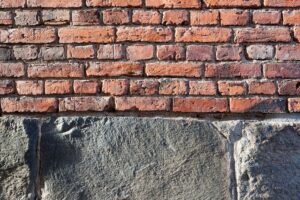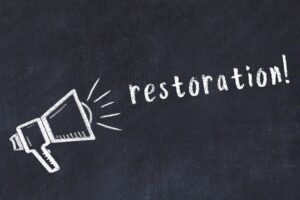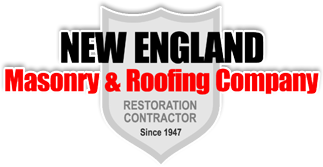Category: Restoration
What Makes Masonry Restoration a Real Challenge?

Like unraveling a historical tapestry, Masonry restoration poses a unique set of challenges. Historical structures bearing the scars and stories of bygone eras demand a meticulous touch to revive their architectural glory. What makes this endeavor particularly challenging?
Material mosaic
Historic masonry boasts a rich range of materials – bricks, stones, mortar, etc. – each with its aging journey. The restoration challenge lies in sourcing materials harmonizing with the original in composition and visual appeal.
Skilled artisans must meticulously recreate intricate details and textures to seamlessly blend new additions with the existing masonry, ensuring a restoration that mirrors the authenticity of the past.
Weathering the elements
Time, weather, and environmental factors conspire to wear down historic structures. Restoration efforts must address existing damage while implementing preventive measures to shield against future onslaughts.
Expertise beyond the surface
Masonry restoration transcends surface level repairs, an art that demands a fusion of knowledge and craftsmanship. The integration of modern structural standards with historical architecture requires a delicate touch. Ensuring stability while preserving the soul of the structure demands a unique expertise.
The challenge extends beyond bricks and mortar to the philosophical debate of preservation versus modernization. Striking a balance between honoring history and meeting contemporary needs is a nuanced decision.
Exploring the Issue of Building Restoration and Safety

Building restoration, when done with a focus on safety, can offer several benefits for the occupants, the community, and the overall urban environment. Contractors specializing in concrete restoration in Connecticut share some safety-related advantages:
Structural Integrity
Restoration often involves a comprehensive assessment of a building’s structural integrity. Strengthening and reinforcing structural elements contribute to enhanced resistance against potential hazards such as earthquakes or other natural disasters.
Fire Safety
Restoration projects often include updating electrical systems and incorporating fire-resistant materials. This helps in reducing the risk of fire incidents and improves the overall fire safety of the building.
Seismic Safety
In earthquake-prone areas, restoration projects may involve retrofitting techniques to improve a building’s seismic resilience. This is crucial for minimizing damage and ensuring occupant safety during seismic events.
Accessibility
Restoration projects provide an opportunity to make buildings more accessible to people with disabilities. This includes installing ramps, elevators, and other features that comply with accessibility standards, contributing to the safety and inclusivity of the space.
Elimination of Hazardous Materials
Many older buildings may contain hazardous materials such as asbestos or lead. Restoration projects often include the removal of these materials, improving indoor air quality and reducing health risks for occupants.
Upgraded Safety Systems:
Restoration provides an opportunity to install or upgrade safety systems, including fire suppression systems, smoke detectors, and emergency lighting. This enhances the overall safety infrastructure of the building. Look to some of the best in Building Restoration at https://www.nemasonry.com.
Build a Unique Driveway: Advanced Concrete Restoration in Connecticut

Creating a unique driveway through advanced concrete restoration Connecticut contractors offer involves a combination of innovative design, quality materials, and skilled craftsmanship. Here’s a conceptual plan for a distinctive driveway that incorporates both aesthetic appeal and durability:
Material Selection
Opt for exposed aggregate concrete for its textured surface and visual interest. This type of concrete exposes the natural stones in the mix, creating a unique and durable finish.
Color Palette
Choose earthy tones for the main concrete, such as warm grays or browns. Add visual interest by incorporating accent colors that complement the surroundings, such as subtle hints of mossy greens or deep blues.
Pattern and Texture
Integrate geometric patterns into the driveway design. This could include diamond shapes, herringbone patterns, or even a combination of circles and squares. Varying textures within these patterns add depth and visual appeal.
Incorporate Greenery
Integrate small embedded planters within the driveway design. These pockets can host low-maintenance, drought-resistant plants or succulents, adding a touch of greenery and softening the hardscape.
Customizable Lighting
Incorporate energy-efficient LED lights directly into the driveway surface. This not only enhances safety by providing adequate lighting but also adds a modern and sophisticated touch to the design.
Curved Edges
Avoid straight lines and instead opt for curved edges. This creates a more organic and visually appealing flow to the driveway, especially suitable for residential properties.
Improved Building Restoration – How to Breathe New Life into Architectural Treasures

The deterioration and destruction of once-magnificent buildings and landmarks is an unfortunate reality of certain parts of the natural life cycle. Thankfully, modern technology and innovative restoration techniques have made the challenging task of reimagining and restoring aged and damaged architectural marvels exciting.
Harnessing the power of high-tech solutions
The ever-shifting landscape of the digital world has opened the door to a variety of powerful tools and technologies that can be used to aid in the restoration of older and damaged structures. From 3D modeling software to specialized reinspection aids, architects now have access to abundant technology that can help bring even the most senior buildings back to life. Additionally, using digital surveying and mapping dramatically reduces the time and resources associated with measuring and planning the restoration of an entire building.
IoT – a new era of restoration
Equally, deploying the Internet of Things (IoT) presents an excellent opportunity to modernize the restoration process. With connected sensors, the finest details and nuances of aging buildings can be monitored in real time, with any data that requires attention immediately highlighted. Not only does this help identify any issue quickly, but it also helps to reduce the need for costly onsite inspection, repairs, and maintenance.
Reimagining the possibilities of restoration
In modern times, improved building restoration is no longer complex and costly. Technology and innovation make it possible to bring old and damaged buildings back to their original glory – allowing us to breathe life back into architectural treasures and preserve cultural and historical assets. Look to experienced building restoration companies like https://www.nemasonry.com for the best results.
Essential Talks You Need to Have Before Hiring a Building Restoration Service

As you’re considering building restoration for an old or severely damaged building, it’s essential to have the right idea from the start. Before hiring a building restoration service, you’ll find it necessary to have open and informative discussions with your contractor. These talks can help ensure a successful project overall:
- Scope of Work: Start by discussing the scope of the restoration project in detail. Make sure both you and the contractor have a clear understanding of what needs to be done.
- Timeline: Set realistic expectations regarding the project timeline. Allow the contractor to thoroughly examine the building and the areas that need to be restored, and ask for an estimated start and completion date and inquire about potential delays.
- Budget: Clearly define your budget and ask for a detailed cost breakdown. Discuss any potential additional costs that may arise during the project.
- Permits and Regulations: Inquire about the necessary permits and regulations for your specific restoration project. Ensure the contractor is knowledgeable about local building codes to avoid any problems down the line.
- References and Portfolio: Request references from previous clients and review the contractor’s portfolio of similar projects to assess their expertise.
- Quality of Materials: Discuss the materials that will be used for the restoration. Ensure they meet your standards for durability and aesthetics.
- Communication: Establish a clear communication plan. Determine how often you’ll receive project updates and who your main point of contact will be.

















